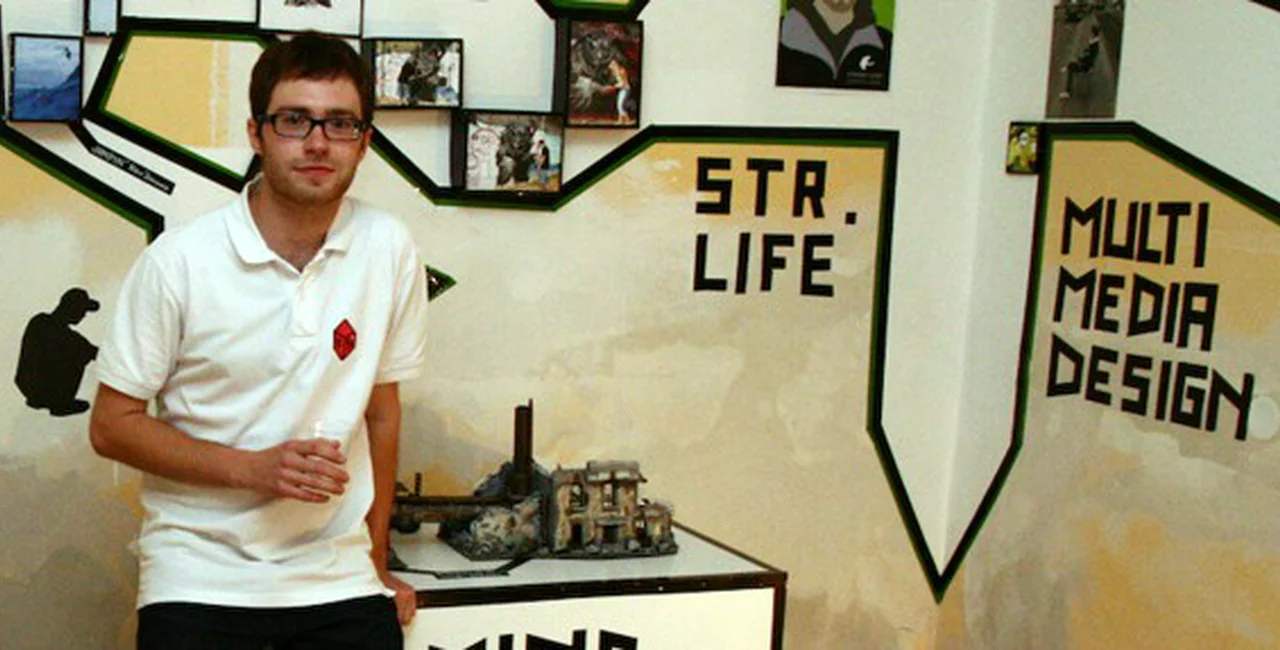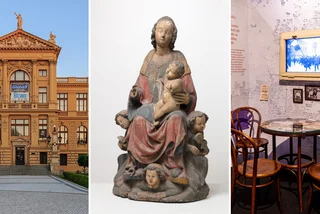
“For me this is real art – to do it without any profit, or trying to be famous. It comes from inside the person.”
Such a perception of art Josef Stránský developed on the streets of Prague. As a teen, he was inspired by the city’s architecture, by the way it looked after dark. He’d sticker and stencil and be out all night tagging, especially in abandoned old buildings, soaking in the destruction and atmosphere. He did it to explore his style, to understand everything you can do with a spray can.
Now, Josef has finished studies in Prague College’s Interactive Media Program and tries to understand how to reconcile the street inside him with an institution. Sounding, perhaps, like an older and wiser man, he observes: “I see that more people tag and spray without any knowledge of typography, design and art.” Josef also sees that some young street artists now just steal the trendy and cool styles of the day. Especially in Prague, where many write on the city’s surfaces only with letters because that’s easier than making stencils of characters or stickers with ideas behind them. “I think that some writers should be more self-critical and respect others property,” he concludes, adding to the widespread feeling in the city that most tags written over and over Prague walls are just some teen rebel practicing his signature in a manner not likely approaching art’s lofty stature.

Josef’s maturation as an artist owes much to the time he spent in New Zealand, where he worked in a company with great local artists painting caravans. What was unusual is that the city often collaborated with these graffiti artists, asking them to paint over unseemly areas. The Kiwis also showed Josef that the “spray is a really powerful technique” and can be employed on a variety of surfaces, not just dreary metro passageways. When he got back to Prague, he founded a design studio with his friends, and they aimed their cans to spray painting on cars, human bodies and building interiors as well as the streets.
When his path led him to join the Prague College’s Interactive Media program, Josef found it fresh and exciting. “This school is about new media and interactivity and teachers have different attitude to students.” If one perceives colleges and universities as places where society trickles down its knowledge into willing receptacles that are meant to become productive members of the civilization, it’s possible to notice that the often-illegal street art doesn’t belong there. But Josef learned that there doesn’t have to be a contradiction. “There are many ways how to speak about street art at a University level – to speak about technigue, how it should be interesting for marketing, what is the idea behind an art piece.”

PARTNER ARTICLE
Josef’s collaboration with the artist Eighd
In a further illustration of how street art and mainstream society can co-exist, Josef hides a rather ironic mantra in one of his pieces – “make art, not crime”. He sees it as much a call to other street artists as to politicians that try to jail them. The “art” in that quote can be replaced with “something good”. This is especially important as he sees Czech Republic as being full of corruption and laziness. “Some people think that they can have the same standard of living without any work or trying to do their best. Everybody should study and work on themselves and not just sit and argue about how bad the system is in the ČR.”

Josef often expresses these and other ideas in hidden messages in his work (with a special nod to conspiracy theories). These messages are not found by everyone, but some people do see them. “I know that it is not possible, but I rather put my money from taxes to services cleaning my graffiti, then to give it to somebody lazy, or somebody who is corrupting the Czech state.”
The once-and-future tagger now has wide-ranging art interests, including computer graphics, animation, 3D, internet projects, sound and photography. He found a way to take tagging into virtual space, creating street art on digital streets. This video is an example of how he brings different techniques together, mixing projection, airbrushing, spraying, markers and computer graphics:
One commercial application of Josef’s interests can be in spaces like clubs, where he creates “interactive backgrounds for parties” and interactive sponsor logos. “I’d rather do some painting for a club, than get arrested in the street,” reflects the young man. Often it’s the same kind of work that he’d do on his own without permission, but this time someone pays him to do it. He has also been creating stickers for concerts, finding it fun when he spots his work in unexpected places around the city.
His next challenge lies in developing a “Spray Robot” which moves on ropes and can be used to spray in places not normally accessible – like roofs and ceilings. This concept is certainly better seen than worded. Check out Josef’s tests:
Josef still goes out and tags, but no longer on night-long adventures. Now he likes to hide his tags, so they won’t be quickly painted or removed and fit to the street better. He wishes to have places to express himself legally, with the city’s cooperation. Especially in places that could use sprucing up – underwalks or walls by tram stations. “I would rather look on painted nature, or something visually interesting, than look on gray conrete walls with illegal posters and tags.” But Josef concedes that people often have strong feelings about street art and it’s often hard to get to the point of any calm discussion on the matter. “When you support illegal things, other people do not understand what is the real point of street art.”
Josef is part of a movement that’s transforming street art. He thinks that young artists need to show that street art “belongs to the city”. He sees that street art can be interesting for sponsors and tourists. And whether doing it with or without permission, the artist should “show that if it is quality piece of art, with theoretical and technical background, it is part of our culture, and there is place for this kind of art.”
More examples of Josef’s work:
The final show of the Prague College HND Interactive Media Program: www.finalshow.cz
***












 Reading time: 5 minutes
Reading time: 5 minutes 























